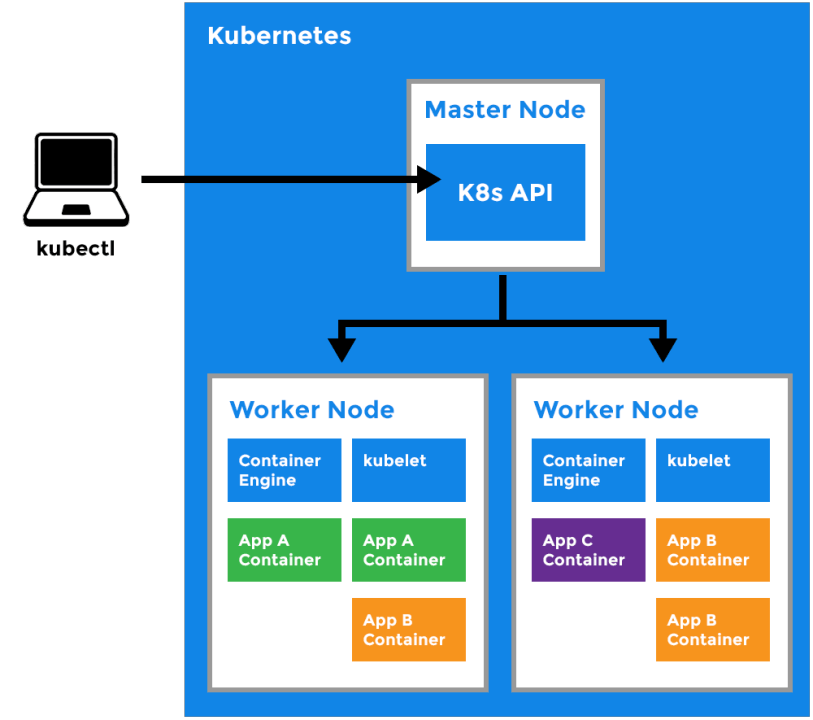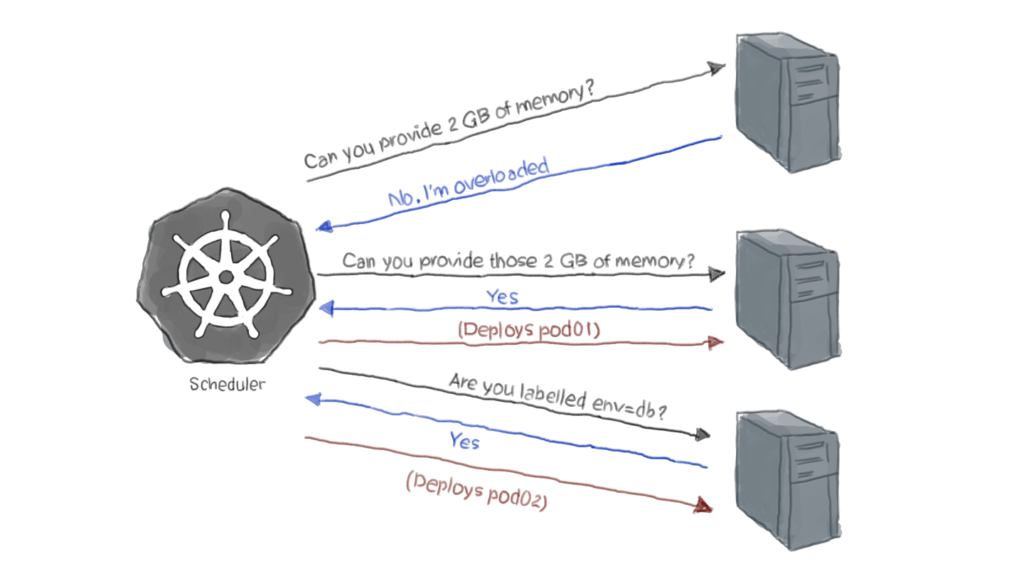Ever wondered how to make your software deployment smoother than ever? Let’s dive into the world of containerization and Kubernetes – your secret sauce for hassle-free operations.
Think of containers as compact packages that hold everything your software needs to run. They’re like mini-environments, making sure your apps work the same way no matter where they’re placed. This means less compatibility fuss and more reliability.
Now, meet Kubernetes – the conductor of your app orchestra. It takes those containers and arranges them flawlessly, ensuring they scale up when there’s a crowd and heal themselves if something goes awry. It’s like having an expert team always looking after your apps.
So, why should you care? Because with containerization and Kubernetes, your business gains flexibility, consistency, and efficiency. Say goodbye to those deployment headaches and hello to a smoother, more streamlined way of running your show.
Elevating Your Business with Containerization Magic
Let’s talk about a game-changer for your business: containerization. Containerization is a technology that allows you to package and isolate applications along with their dependencies into a single, portable unit known as a “container.” These containers provide a consistent environment for software to run, regardless of the underlying system’s configuration.
Containers are a cornerstone of DevOps practices, enabling consistent testing and deployment environments. They also fit well with continuous integration and continuous deployment (CI/CD) pipelines.
Think of it like packaging your software in a neat box – a container – that holds all its stuff. Now, here’s why it’s a smart move:
Isolation for Peace of Mind
Containers keep your apps snug in their own little worlds. So, if one app misbehaves, it won’t drag the others down. Your business stays smooth, even in stormy software seas.
Portability: Apps on the Go
Containers are like digital nomads. They’re built to work the same way everywhere they go. So, you can move them from your laptop to the cloud, and they’ll still perform their magic. No more “It works on my machine” dramas!
Consistency: One Recipe, Many Dishes
Imagine having one recipe that works for all your favorite meals. That’s what containers do for your apps. You build them once, and they run consistently anywhere. Your customers get the same awesome experience every time.
Simplifying the Software Dance
Now, picture your software as a choreographed dance. Containers make sure everyone’s in step. They bundle everything your app needs, so you don’t have to worry about missing parts or jumbled moves.
See, containerization isn’t just tech talk; it’s about making your business smoother, more flexible, and ready to dazzle your customers.
Containerization is a ubiquitous practice embraced by a diverse range of well-known businesses. From Coca-Cola, which employs it to ensure consistent user experiences across diverse markets and regions, to NASA, where it facilitates the development and deployment of software for intricate simulations and data analysis, the benefits of containerization are evident across industries.
? Ready to Revolutionize Your Deployment Process? Discover the future of application deployment with Containerization and Kubernetes. Start your journey towards seamless deployments today!
Core Components of Kubernetes
Ever wondered how Kubernetes makes the magic happen? It’s all about the core components working behind the scenes to orchestrate your containers seamlessly.
Master Node: This is the big boss that makes decisions and plans the show.
Worker Nodes: They’re the performers on stage, following the master’s instructions.
API Server: It’s like the messenger between you and the boss, passing along your requests.
etcd: Imagine it as the memory that remembers everything the team needs to know.
Controller Manager: It keeps an eye on everyone, making sure they’re doing what they should be.
Scheduler: Just like a choreographer, it assigns tasks to the performers, making sure everyone’s busy but not overwhelmed.
Master Node: The Maestro’s Brain
Think of the master node as the brain of Kubernetes. It’s the control center that oversees everything – making decisions, coordinating tasks, and ensuring harmony among all components.

Worker Nodes: The Dedicated Performers
Worker nodes are like the dancers on stage, executing the master node’s instructions. They run your containers, ensuring your apps shine brightly for your audience (or users) to enjoy.
API Server: The Communication Hub
The API server is the messenger that relays your commands to the master node. It’s like talking to the director of a play – your requests go through here to make things happen in the Kubernetes universe.
Scheduler: The Task Master
Just like a choreographer assigns dances to dancers, the scheduler assigns tasks to worker nodes. It ensures workloads are distributed evenly and everyone gets their fair share of action.

etcd: The Memory Bank
Imagine etcd as the memory of Kubernetes. It stores all the important information – like configurations and state – so that everything remains consistent and everyone’s on the same page.
Controller Manager: The Choreographer
This component keeps the show in line. It watches over your containers, making sure they match the desired state you set. If something drifts off, the controller manager nudges it back on track.
Understanding these core components helps you grasp how Kubernetes orchestrates your containers flawlessly. It’s like a well-coordinated dance, where each member of the orchestra plays their part to create a harmonious performance.
? Read more: DevOps for Fashion Circularity Web App
Let’s explore the cast of characters in Kubernetes’ container world – Pods, Deployments, StatefulSets, and DaemonSets. Each has a unique role in the app performance, just like actors on a stage.
Pods: Team Players
Imagine a pod as a group of friends working together. It holds one or more containers that share resources, like memory and storage. Perfect for when apps need to collaborate closely.
In Kubernetes, a “pod” is the smallest deployable unit and the fundamental building block of an application. A pod can contain one or more closely related containers that share networking, storage, and runtime resources within the same host.
Pods are designed to be ephemeral. They can be easily created, scaled, and terminated as needed. Kubernetes takes care of managing the deployment, scaling, and lifecycle of pods, ensuring the desired number of replicas are running and healthy according to your defined configuration.
Pods provide a level of isolation, but it’s important to note that they share the same IP address and port space. This means that containers within the same pod can communicate with each other using “localhost,” as if they were on the same machine, simplifying internal communication.
Deployments: Scene Changers
Deployments are like directors that handle changes gracefully. They manage updates and rollbacks, ensuring your app transitions smoothly from one version to another. Great for keeping your app’s performance consistent.
StatefulSets: Individual Stars
StatefulSets are for those apps that need a spotlight. They give each pod a unique identity and maintain order, making sure data isn’t lost during updates. Think of them as solo acts that love their special attention.
In Kubernetes, a “StatefulSet” is a higher-level abstraction used to manage the deployment and scaling of stateful applications.
StatefulSets provide ordered, unique network identities, and stable hostnames for each instance, making them suitable for applications like databases, key-value stores, and other systems where data consistency and identity are crucial.
DaemonSets: Behind-the-Scenes Heroes
DaemonSets work backstage. They make sure a copy of a specific pod runs on every node. Useful for stuff like monitoring or networking tasks that need to happen everywhere.
In Kubernetes, a “DaemonSet” is a type of controller that ensures that a specific pod runs on every node within a cluster. Unlike other controllers that aim for a specified number of replicas across the entire cluster, DaemonSets focus on running one copy of a pod on each node.
DaemonSets are commonly used for tasks that need to be executed on every node, such as log collection, monitoring agents, or network configuration. They help ensure that these tasks are consistently carried out across all nodes in the cluster, regardless of the cluster’s size or changes in the node count.
Just like a play, different scenes require different characters. Similarly, in Kubernetes, you choose the workload type that fits your app’s story best. It’s all about giving your app the stage it needs to shine!
? Read more: IoT Device Management Using Kubernetes
Accelerate Your Business with Kubernetes
Implementing Kubernetes can lead to a remarkable increase in speed and efficiency. Many businesses have reported up to a 50% reduction in deployment times and a significant decrease in operational complexities. This means faster updates, quicker response to market demands, and improved resource utilization.
Moreover, Kubernetes empowers teams to focus on innovation rather than managing infrastructure intricacies. It streamlines app deployment, scales resources on-demand, and ensures high availability – ultimately allowing your team to channel their efforts into delivering value to customers.
Kubernetes offers not only technical advantages but also a strategic edge. By harnessing its power, businesses can expedite processes, enhance application reliability, and drive customer satisfaction.
Ready to transform? Let’s talk about how Kubernetes can elevate your business journey.
See how we can help to overcome your challenges









